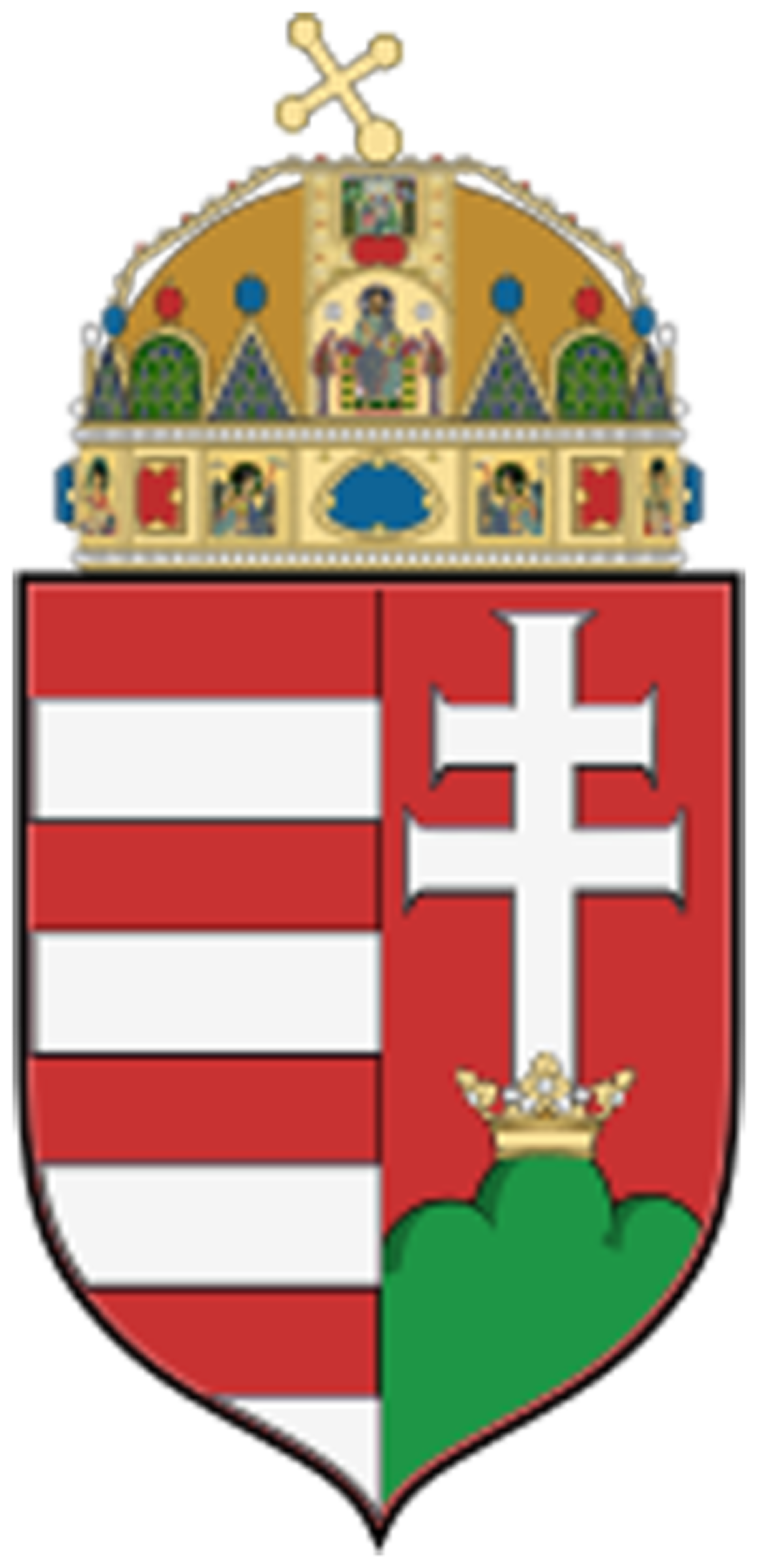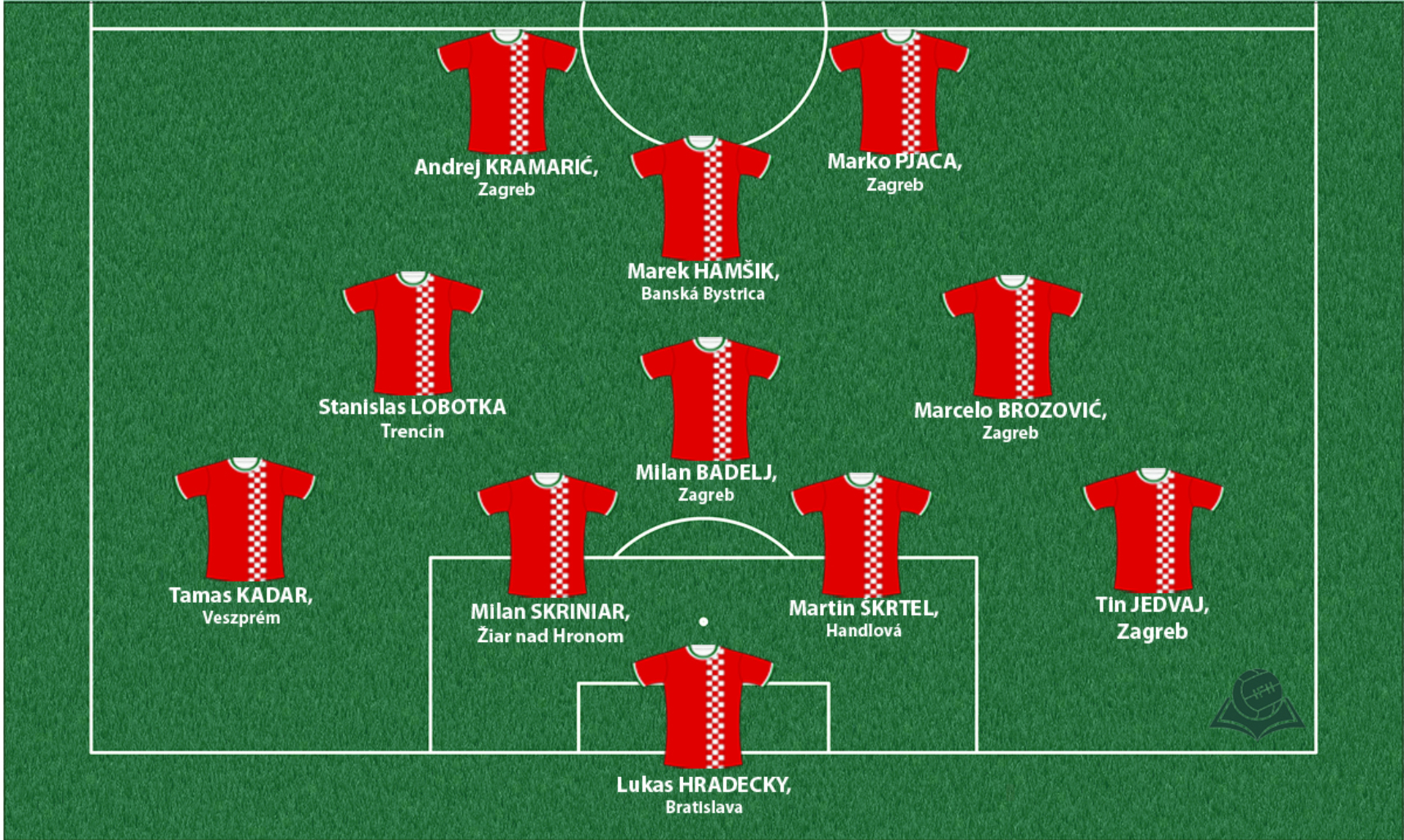The Lands of the Hungarian Crown
Once one of the territorially larger states of Central Europe, the Lands of the Hungarian Crown were reduced to the “Remnants of the Remnants” after Ottoman conquests in the 16th century, retaining only the northern and the northwest part of the kingdom that it was in the Middle Ages. At the same time the crown was taken by the Habsburg family, who will keep that title for the next five centuries.

Coat of arms

Shirt
| Position | First name | Last name | Mjesto rođenja | Like | Dislike | |
|---|---|---|---|---|---|---|
| GK | Josip | POSAVEC | Varaždin |
20 |
6 |
|
| GK | Lukas | HRADECKY | Bratislava |
15 |
6 |
|
| GK | Martin | DUBRAVKA | Žilina |
5 |
2 |
|
| DC | Jozo | ŠIMUNOVIĆ | Zagreb |
3 |
1 |
|
| DC | Martin | ŠKRTEL | Handlová |
32 |
10 |
|
| DC | Milan | ŠKRINIAR | Žiar nad Hronom |
41 |
6 |
|
| DRC | Tin | JEDVAJ | Zagreb |
29 |
7 |
|
| DLC | Tamas | KADAR | Veszprem |
10 |
5 |
|
| DRLC | Tomas | HUBOCAN | Žilina |
4 |
3 |
|
| DR | Petr | PEKARIK | Žilina |
0 |
2 |
|
| DL | Josip | PIVARIĆ | Zagreb |
7 |
5 |
|
| DC/DMC | Filip | BENKOVIĆ | Zagreb |
5 |
0 |
|
| DMC | Milan | BADELJ | Zagreb |
45 |
6 |
|
| MC | Domagoj | ANTOLIĆ | Zagreb |
3 |
1 |
|
| MC | Juraj | KUCKA | Bojnice |
10 |
4 |
|
| MC | Stanislav | LOBOTKA | Trenčín |
10 |
6 |
|
| MRC | Matus | BERO | Ilava |
2 |
4 |
|
| MRLC | Marcelo | BROZOVIĆ | Zagreb |
45 |
5 |
|
| AMC | Ante | ĆORIĆ | Zagreb |
2 |
1 |
|
| AMC | Laszlo | BENEŠ | Dunajská Streda |
6 |
3 |
|
| AMC/SS | Marek | HAMŠIK | Banská Bystrica |
39 |
5 |
|
| AMC/SS | Ondrej | DUDA | Snina |
6 |
1 |
|
| AMRLC | Marko | ROG | Varaždin |
18 |
2 |
|
| AMRL/DR | Fran | TUDOR | Zagreb |
3 |
1 |
|
| AMRL | Miroslav | STOCH | Nitra |
3 |
2 |
|
| AMRL | Robert | MAK | Bratislava |
6 |
2 |
|
| AMRL | Vladimir | WEISS | Bratislava |
8 |
2 |
|
| AML/DL | Petar | BOČKAJ | Zagreb |
5 |
1 |
|
| FRLC | Marko | PJACA | Zagreb |
18 |
0 |
|
| FC | Adam | NEMEC | Banská Bystrica |
6 |
3 |
|
| FC | Krisztian | NEMETH | Győr |
0 |
1 |
|
| FC | Michal | DURIS | Uherské Hradiště |
0 |
2 |
|
| FC/SS | Andrej | KRAMARIĆ | Zagreb |
44 |
3 |
(Today part of: northwestern Croatia, western Hungary, western Slovakia)
After the civil war (1527 – 1538) and the Ottoman conquests in the 16th century, there came a division of the Kingdom of Hungary into the (semi)independent principality of Erdély (Transylvania) in the east, and the western part, the so-called Partium that had its centre in Posonium (Bratislava), which had chosen Ferdinand of Habsburg (ruled 1526 – 1564), the brother of the Emperor Charles V, for their new king. As a matter of fact, the division of Habsburgs into their Spanish and Austrian branches started at this time, where the younger Ferdinand was given rule over the Austrian hereditary lands, the Lands of the Bohemian Crown and, in mid-16th century, the title of Emperor as well. Due to the severely reduced size of the former kingdom, Partium was given the name “Remnants of the Remnants” (reliquiaereliquiarum), and it was further divided into the larger Hungarian part and the smaller Croatian-Slavonian one. However, even with its reduced size, it was approximately as large as the Austrian hereditary lands or the Lands of the Bohemian Crown. Thanks to the newly implemented system of border protection from the Ottomans, “the Remnants” became the defensive shield of Habsburg lands in Central Europe.
As before, the majority of the power remained in the hands of noble families, among whom the most prominent ones were the families Battjyany, Esterhazy, Nadasdy, Bathory, Rakozcy, Zrinski etc. All of them had noble titles and branches in several states, as well as numerous estates with ethnically diverse population, which was a usual case in feudal Europe. Also, the Ottoman conquests, emigration of Croatian nobility towards the north, and the unification of Croatian and Slavonian parliaments constituted some of the reasons for the shift of the name of Croatia from the Dinara mountain area to the unconquered areas of northwest part of medieval Slavonia, around Zagreb, and this shift would become more prominent after the liberation wars at the end of the 17th century.
Sources
- Ivo GOLDSTEIN, Povijest: Hrvatska povijest, knjiga XXI., Zagreb 2008.
- Geza PALFFY, '' Prekogranična povezanost Nikole IV. i Nikole VII. Zrinskog '', Susreti dviju kultura: obitelj Zrinski u hrvatskoj i mađarskoj povijesti (gl.ur. Romana Horvat), Zagreb, 2012. 117-163
- Alan John Percivale TAYLOR, Habsburška monarhija: 1809-1918., Zagreb, 1990.
- Stanko ANDRIĆ, ''Slavonija'', http://hipsb.hr/slavonija/
- ''Vojna krajina'',: http://www.enciklopedija.hr/Natuknica.aspx?ID=65199
